Diversity in Neuroscience Summer Interns
The Diversity in Neuroscience Summer Internship provides Western undergraduate students interested in cognitive neuroscience, who self-identify as being a member of an underrepresented group in neuroscience, including Black people, Indigenous persons, members of racialized groups, members of the 2SLGBTQIA+ community, people with a disability and women, an opportunity to have an immersive experience in a research environment, along with gaining valuable skills needed to excel in academia and beyond.
Learn about the summer internship and how to apply »
2025 BrainsCAN Interns:
Iqra Devlani, Jennifer Lee, Mackenzie More, Pruthvish Shah, Aisha Siddiqui, Julia Xie, Edward Yang, Lillian Zheng, Joy Zhao
Former BrainsCAN Interns:
Sarah Al-Saoud, Adam Alnajjar, Parinita Arora, Gurleen Badwal, Danelle Czink, Kseniya Dybatch, Mouad El Ganga, Brooke Gelinas, Renee Guerville, Abbey Horner, Gurwinder Johal, Amy Jing, Grace Kang, Ashley Li, Daisy Li, Valeria Mendez Diaz, Barman Mirakbari, Keligne Mutambayi, Ashini Peiris, Samina Panjwani, Mohammed Rajab, Andreia Rodrigues, Yoshan Sasiharan, Janvi Shah, Alyson Shim, Shveta Suresh, Sophie Henke Tarnow, Rachel Watson, Sabrina Yang, Mohamed Yousif, Glenda Zhai, Kuralay Zhaksylyk, Ocarina Zheng
2025 BrainsCAN Interns

Iqra Devlani
2025 BrainsCAN Summer Intern
Supervisor(s): Dr. Filip Kosel
Research Information:
Neuroscience research has used rodent models to better understand different diseases and disorders like Alzheimer’s and schizophrenia. This understanding helps in the development of tests and treatments. However, there is a translational gap between rodent models and humans, in which therapies found successful in rodent trials fail during human clinical trials. Standardization of tasks used in rodent and human research is important for reducing the gap, and the present study aims to validate selected touchscreen tasks in humans to improve the translational ability. These tasks include 5 computerized versions of working memory, spatial processing, and attentional tasks based on existing and validated paradigms. Having translational and validated tasks will allow for direct comparisons of rodent and human data, improving cross-species knowledge transfer. This will enhance our understanding of cognitive biomarkers of neurological disorders and can improve the likelihood that novel drugs tested for the disorders will show similar cognitive effects in mice during preclinical trials and in humans during clinical trials.
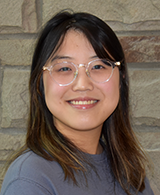
Jennifer Lee
2025 BrainsCAN Summer Intern
Supervisor(s): Dr. Jessica Grahn and Sarah Park
Research Information:
Parkinson’s disease (PD) is a progressive neurological disorder, often characterized by motor symptoms such as tremors, rigidity, and gait difficulties. This summer, in collaboration with Dr. Rose, Jennifer is investigating whether auditory imagery, the internal experience of “hearing” music in one’s mind, can serve as an internal cue to support gait in individuals with PD. While rhythmic auditory stimulation (RAS) has been shown to help regulate movement through external rhythmic cues, this study explores whether internally generated cues can offer similar benefits without the need for external sound. Participants will complete walking tasks using gait mat technology, allowing for comparisons between spontaneous gait and walking guided by imagined music, using both familiar and unfamiliar melodies. This pilot work aims to support the development of safe, replicable behavioral paradigms that can be used in future neuroimaging studies examining music-based interventions in PD.
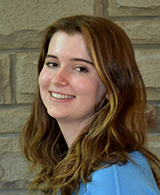
Mackenzie More
2025 BrainsCAN Summer Intern
Supervisor(s): Dr. Brian Allman
Research Information:
Impulsive actions, such as blurting out a comment, making a spontaneous purchase, or binge eating are everyday occurrences. While often harmless, heightened impulsivity is a core feature of several psychiatric and neurological conditions, including ADHD, externalizing disorders, mood disorders, and substance use disorders. As a result, impulsivity is not only a common symptom but also a key target for clinical intervention of these conditions. This summer, Mackenzie is using rat models and fiber optic photometry with novel behavioural paradigms to investigate neural activity associated with impulsive behaviour. Her research will also explore how negative urgency (rash action in response to negative emotions) modulates the frequency and intensity of impulsive reactions. Mackenzie’s work aims to advance our understanding of the underlying neural mechanisms of impulsivity and its role in mental health.

Pruthvish Shah
2025 BrainsCAN Summer Intern
Supervisor(s): Dr. Brian Corneil
Research Information:
Humans dominantly use vision to guide actions, especially target-directed movements. Research over the past decade in the Corneil lab has yielded compelling evidence to support the hypothesis that the superior colliculus in the brainstem rapidly processes visual signals to initiate the earliest phase of muscle recruitment on limb muscles termed the Express Visuomotor Response (EVR). This suggests that the most rapid visually-guided limb movements are initiated by a phylogenetically-conserved subcortical circuit through the superior colliculus rather than the commonly assumed cortical pathway through the motor cortex.
Pruthvish is working on analyzing EVR muscle activity caused by visually salient looming and receding targets in healthy patients to discover a new visual stimulus property that provokes a prominent EVR. In line with the hypothesis that an evolutionarily conserved pathway initiates the EVR, Pruthvish predicts that a looming target will cause a stronger, statistically significant EVR than a receding target, due to its relevance for fast responses.
One implication of Pruthvish’s research is with stroke patients with scotomas, regions in the visual field with conserved sensation but impaired perception, where patients may be able to respond to looming/receding target stimuli in the affected visual area despite being perceptually blind to the stimulus. Research on express visuomotor responses and their involvement in motor control disorders, such as those in stroke patients, can lead to improved clinical diagnostic methodologies & tools, personalized rehabilitation, and therapeutic interventions that leverage the preserved neural pathway to improve motor function.

Aisha Siddiqui
2025 BrainsCAN Summer Intern
Supervisor(s): Dr. Jibran Khokhar and Kendra Loedige
Research Information:
Much remains unknown about the mechanisms behind genetic susceptibility to nicotine addiction, a major public health concern. CADM2 is a gene that plays a significant role in synaptic organization and signaling in dopaminergic pathways, particularly in brain regions involved with reward-processing and motivation. Previous studies have linked CADM2 variants to addiction related traits in humans and mice, including impulsivity, risk-taking, externalizing behaviour, and experimentation with substance use. In her project, Aisha will investigate the impact of a CADM2 gene deletion on gene expression in mouse brains. Using RNA sequencing and RT-qPCR, she will compare RNA transcript levels across whole-brain, prefrontal cortex, and striatum samples from male and female, wild-type and knockout mice. Also, by investigating the understudied sex-specific effects of CADM2, Aisha's project will provide comprehensive insights into the molecular mechanisms of CADM2 as they relate to increased genetic risk for addiction development.

Julia Xie
2025 BrainsCAN Summer Intern
Supervisor(s): Dr. Susanne Schmid
Research Information:
Autism Spectrum Disorder (ASD) is a neurodevelopmental condition caused by a complex interaction of genetic and environmental risk factors. Currently, there are limited medical treatments for ASD, however, one intervention that has shown to improve ASD symptoms includes environmental enrichment programs. An environmental enrichment refers to providing environmental conditions with enhanced access to sensory, cognitive, motor, or social stimulation. However, the extent to which environmental enrichment can counter genetic risk factors remains unclear and often evaluate a limited range of ASD-like traits. As such, Julia will be testing social behaviour and auditory processing on a Cntnap2 knockout rat model for ASD, to evaluate the extent to which an early environmental enrichment can improve ASD-like traits in the rodent model.
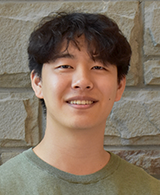
Edward Yang
2025 BrainsCAN Summer Intern
Supervisor(s): Dr. Jessica Grahn
Research Information:
Rhythmic auditory stimulation (RAS) has been established as an effective therapy for treating neurological and movement disorders such as Parkinson’s Disease. Using auditory cues such as music or a metronome, RAS helps individuals improve areas such as gait by synchronizing body movements with the beat. There are many motor regions of the brain thought to be involved in both external beat perception and generation of movements. Thus, this project aims to use functional near-infrared spectroscopy (fNIRS) and a pressure-sensitive walkway to measure motor cortical activity while walking with, without, and synchronized to a beat, in musicians and non-musicians.

Lillian Zheng
2025 BrainsCAN Summer Intern
Supervisor(s): Dr. Jibran Khokhar
Research Information:
The CADM2 gene encodes a synaptic cell adhesion molecule involved in neural connectivity and circuit organization. A growing body of evidence links CADM2 to neurobehavioural traits such as impulsivity, attention regulation, and psychiatric conditions including attention-deficit/hyperactivity disorder, ADHD. Genome-wide association studies, GWAS, have identified associations between CADM2 variants and behaviours such as risk-taking, impaired cognitive control, and increased vulnerability to addiction; however, the underlying causal mechanisms remain unclear. This study will investigate the behavioural impact of targeted CADM2 deletions using genetically modified rat models. Lillian will conduct a series of behavioural assays, including the open field test, prepulse inhibition, and nociceptive tests such as the tail flick and hot plate assays. These experiments aim to clarify how disruptions in CADM2 may contribute to neurodevelopmental traits relevant to ADHD, addiction, and related psychiatric disorders.
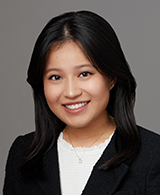
Joy Zhao
2025 BrainsCAN Summer Intern
Supervisor(s): Dr. Jonathan Lau
Research Information:
In Canada alone, the economic burden of Parkinson’s disease (PD) exceeds $1.2 billion annually, a figure expected to rise with the aging demographic. Early diagnosis is crucial for identifying patients before substantial neurodegeneration has already occurred but is challenging as individuals in this phase (prodromal) often have motor symptoms that may not fulfill the PD diagnostic criteria or may overlap with symptoms of other neurological conditions.
Brain charting can draw on large datasets (>100,000 MRI scans) to create normative benchmarks for brain growth and aging. Our lab previously developed an open-source, 32-point-based framework (called anatomical fiducials or AFIDs) which can characterize morphometric changes on structural MRI in healthy participants and PD patients. The application of this protocol to large PD and control datasets will give us a better understanding of the changes in brain structure on a milimetric scale throughout disease progression. Overall, this work aims to bridge brain charting, landmarks, and machine learning to develop a millimetric approach for characterizing the trajectory of PD and identifying biomarkers for early detection.
Former BrainsCAN Interns

Sarah Al-Saoud
2022 BrainsCAN Summer Intern
Supervisor(s): Dr. Jessica Grahn
Research Information:
Sarah worked on a feasibility study using transcranial direct current stimulation (tDCS) to modulate neuronal activity in the supplementary motor cortex of human participants to investigate the effects of anodal stimulation on different types of rhythmic processing. The goal of this study is to compare the role of the motor system during initial beat perception (induction) to internal maintenance of the beat (sustaining), thus elucidating information about the temporal dynamics of motor system excitability during musical beat processing. In addition, Sarah will contribute to data collection and analysis for the OMMABA study, which aims to create a multimodal behavioural and neuroimaging (EEG and fMRI) dataset characterizing healthy human auditory processing and will use virtual reality (VR) technology to examine the effects of visual and auditory cues on spontaneous beat synchronization in gait.

Adam Alnajjar
2024 BrainsCAN Summer Intern
Supervisor(s): Dr. Jibran Khokhar
Research Information:
Vaping, although potentially safer than smoking, carries risks that are not fully understood, especially for vulnerable groups. Therefore, studying nicotine vapour exposure is crucial due to its rising popularity, especially among adolescents and young adults, who are more susceptible to its potential health risks. This summer, Adam used MRI analysis to assess the influence of JUUL e-cigarette nicotine vapour effects on brain connectivity using a seed-based approach to look at corticostriatal connectivity in rats. MRI analysis involves using magnetic resonance imaging to study the brain's structure and function in a non-invasive way. Adam's research will look to contribute to the growing field of neuropharmacology, specifically addiction and its effects on the brain.

Parinita Arora
2022 BrainsCAN Summer Intern
Supervisor(s): Dr. Brian Allman
Research Information:
Hearing loss is a highly prevalent health condition, affecting ˜466 million individuals worldwide. In addition to causing deficits in auditory processing, epidemiological studies have identified hearing loss as the highest modifiable risk factor for dementia. To better understand the mechanistic link between hearing loss and cognition, Pari used a combination of cognitive-behavioural testing, neural recordings from the brain, and histological techniques in a preclinical model of dementia. Given that even a mild hearing loss is akin to aging the brain by ˜7 years, Pari's study represents an important first step toward understanding how hearing loss mayexacerbate cognitive decline in individuals susceptible to dementia.
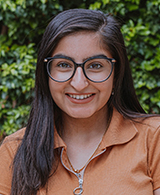
Gurleen Badwal
2024 BrainsCAN Summer Intern
Supervisor(s): Dr. Kasey Van Hedger
Research Information:
Parkinson's disease (PD) is a neurodegenerative disorder often recognized by the onset of motor symptoms such as bradykinesia, muscle rigidity, and resting tremor. However, patients also commonly experience non-motor symptoms such as apathy, depression, and cognitive impairment. Apathy, a condition characterized by reduced interest and motivation, is a predictor of cognitive impairment, specifically in executive functioning domains. Despite this fact, a formal treatment guideline for apathy in PD has not been developed. As her primary project, Gurleen will be exploring the relationship between apathy and cognitive impairment in patients with PD, PD-mild cognitive impairment (PD-MCI), and PD-dementia (PDD). As a subproject, she will be exploring the neuralcorrelates of executive functioning in healthy control subjects using diffusion-weightedmagnetic resonance imaging.
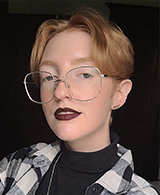
Danelle Czink
2024 BrainsCAN Summer Intern
Supervisor(s): Dr. Paul Frewen
Research Information:
Neurofeedback (NFB) and transcranial alternating and direct current stimulation (tACS/tDCS) are two methods used to regulate brain activity, specifically alpha band activity. In NFB, participants work to increase/decrease their own electroencephalogram (EEG) activity in real time, while tACS uses non-invasive electrical stimulation to change brain activity. In Dr. Paul Frewen's MEDITATIONS lab, Danelle will contribute to a study that hopes to determine which method better modulates alpha bands through a direct comparison of NFB and tACS.

Kseniya Dybatch
2022 BrainsCAN Summer Intern
Supervisor(s): Dr. Olivia Reshmi Gosh-Swaby
Research Information:
Increasing evidence has shown that a healthy diet and routine exercise are key to maintaining a strong memory and cognitive abilities in humans. At the Translational Cognitive Neuroscience Lab (TCNLab), she will be exploring hippocampal-dependent memory and learning in obese rodent models as well as humans via touchscreen paradigms. The study evaluated the effects of exercise on cognition in obesity, and how it may interact with neuroplasticity in the hippocampus. Techniques used will include MRI, optogenetics, and immunohistochemistry.

Mouad El Ganga
2023 BrainsCAN Summer Intern
Supervisor(s): Dr. Kasey Van Hedger
Research Information:
Parkinson's Disease (PD) is a progressive neurodegenerative disorder characterized by significant motor dysfunction, with a variety of non-motor symptoms also affecting many patients. Neurodegeneration in PD precedes the onset of clinical symptoms, often leading to significant neurodegeneration by the time of diagnosis. Rapid eye movement sleep behaviour disorder, also known as RBD, involves a loss of sleep paralysis leading to the enactment of dreams and is considered a prodromal form of PD. Further investigation into RBD may offer a better understanding of the preclinical stages of PD. This summer, Mouad worked with clinical and neuroimaging data to explore correlates of RBD in patients with PD. Prior research has also found that having RBD is related to experiencing hallucinations in patients with PD. As a sub-project, Mouad is interested in exploring clinical features of the subset of patients with PD who also experience hallucinations.
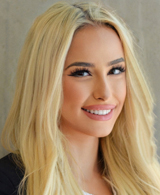
Brooke Gelinas
2023 BrainsCAN Summer Intern
Supervisor(s): Dr. Blake Butler
Research Information:
Covert attention describes the phenomenon whereby we can attend to someone speaking while looking at a completely different person (i.e., eavesdropping). A recent study showed that when our attention is diverted, there are measurable changes in the way we integrate auditory and visual speech cues. In this EEG study, Brooke developed a paradigm that explores which stimulus features mediate this change, in an effort to determine how individuals with atypical hearing (e.g., cochlear implant users) integrate signals across sensory pathways.

Brooke Gelinas
2022 BrainsCAN Summer Intern
Supervisor(s): Dr. Lindsay Nagamatsu
Research Information:
Brooke worked on a study that aims to examine the health behaviours of Canadian Indigenous older adults during COVID-19, compared to before COVID-19, and assess their knowledge of dementia risk factors. Study findings may help highlight areas for improved dementia literacy and healthy lifestyle resources for the Indigenous population to promote improved physical and cognitive health.

Renee Guerville
2024 BrainsCAN Summer Intern
Supervisor(s): Dr. Ryan Stevenson
Research Information:
The acoustic startle response is a reflexive muscular contraction to a sudden auditory stimulus such as a loud sound. The startle response is typically quantified as an eyeblink response in humans. It can be reliably indexed with electromyography (EMG), where electrodes measure orbicularis oculi muscle activity. The startle response can be modulated with pre-pulses, quieter sounds presented before the loud, startling sound. Pre-pulses can either facilitate, inhibit, or have no effect on the startle response. The startle response reflects two types of involuntary processing of auditory sensory information-sensory sensitivity and sensorimotor gating, or filtering. This study will use a simultaneous EMG-fMRI acquisition during a startle paradigm to provide a quantitative assessment of the neuronal correlates of the startle reflex and its pre-pulse modulation.
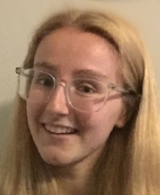
Abbey Horner
2022 BrainsCAN Summer Intern
Supervisor(s): Dr. Paul Minda
Research Information:
Abbey is a Psychology graduate who worked with Dr. Paul Minda. Abbey examined the effects of a short mindfulness-based meditation intervention on participants' mindful attitudes and emotional intelligence.

Gurwinder Johal
2022 BrainsCAN Summer Intern
Supervisor(s): Dr. Susanna Schmid
Research Information:
Autism Spectrum Disorder (ASD) is a neurodevelopmental condition characterized by deficits in social communication and interaction, as well as repetitive patterns of behaviour. Causes of ASD can be genetic, environmental, or both. The Cntnap2-knockout rat is a genetic model of ASD and can be used to investigate the neural mechanisms contributing to autism symptoms. Gurwinder conducted experiments evaluating whether the autism-like symptoms exhibited by the Cntnap2-knockout rat are malleable to environmental conditions. Specifically, he will be testing auditory processing mechanisms and social behaviour. Ultimately, this work aims to unravel the complex genetic-environmental relationship underlying ASD.

Amy Jing
2022 BrainsCAN Summer Intern
Supervisor(s): Dr. Jörn Diedrichsen
Research Information:
Working memory bridges perception and action beyond the immediate, thus enabling flexible goal-directed behavior. While there is good evidence that we can flexibly switch priorities among sensory representations in working memory, how the human mind juggles internal representations as they become relevant to guide sequential behaviour remains poorly understood. Specifically, it is unclear how and where in the brain memory representations are brought into focus during sequential behavior. This project addresses the question of how the human brain represents abstract information over extended delays, and whether it is different to do so when we can prepare for prospective action or when we lack information for complete sequence preparation. We aim to address this question by examining brain activation and activity patterns associated with working memory and motor planning for multiple sequential finger movements. We will use high-field fMRI (7T) to obtain BOLD signal with higher specificity and signal-to-noise ratio than at conventional fMRI fields.

Grace Kang
2023 BrainsCAN Summer Intern
Supervisor(s): Dr. Penny Macdonald
Research Information:
Parkinson's disease (PD) is the second most common neurodegenerative disorder among older adults, and its prevalence is projected to increase significantly in the next few decades. PD can manifest in severe motor and nonmotor symptoms, including anosmia. Anosmia is the inability to smell and is a common feature of PD, typically in early stages of the disease. It can have profound impacts on quality of life, leading to malnutrition, depression, and even mortality from the inability to detect harmful warning smells. This summer, Grace examined clinical correlates of anosmia in a large sample of patients with PD and age-matched healthy control participants. She will also be gaining experience working with neuroimaging data to begin exploring possible neural correlates of anosmia.

Ashley Li
2021 BrainsCAN Summer Intern
Supervisor(s): Dr. Derek Mitchell
Research Information:
Ashley worked on a project designed initially for remote testing (ethics application already under review) examining the impact of medical masks on emotion recognition as a function of perceived race of the individual wearing the mask (and psychometrically assessed ethnic identity of the observer). Prior work has indicated that emotion recognition is less accurate for emotions expressed by individuals who are perceived as being from a different cultural group than one's own (e.g., outgroups are perceived as more angry than in-group members). The group explored whether this effect is exacerbated in situations where fewer facial cues are available (i.e., when wearing a medical mask) using a remote testing protocol that is set-up and approved by TRAC.

Daisy Li
2022 BrainsCAN Summer Intern
Supervisor(s): Dr. Laura Batterink
Research Information:
A central question in bilingualism research is whether the cognitive representations involved in processing two languages are common or independent. Inspired originally by a study conducted by DeClerck et al. in 2020, this summer I investigated the shared syntax phenomenon in Chinese-English bilingual. Using a rapid parallel visual presentation (RPVP) paradigm, I'm looking for the sentence superiority effect in bilingual participants when they are presented with Chinese-English mixed-language stimuli. Under the supervision of Dr. Batterink, I implemented this study independently, including stimulus design, participant recruitment, data collection and analysis, and so on. I hope my study will expand our understanding of syntactic representations shared across typographically dissimilar languages.
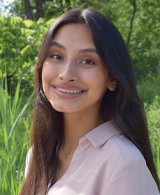
Valeria Mendez Diaz
2024 BrainsCAN Summer Intern
Supervisor(s): Dr. Marco Prado
Research Information:
Alzheimer's disease poses major public health challenges, with its prevalence expected to rise dramatically in the coming years as the growing population continues to age. In Canada alone, the number of individuals affected is projected to approach 1 million by 2031, not including the burden placed on family members and the healthcare system.Valeria's research addresses a critical aspect of this complex disease by investigating the role of ApoE, a lipoprotein that is involved with lipid and cholesterol transport in the brain. ApoE4 is an important genetic risk factor for AD and people with 2 copies of this gene have 15x higher risk of Alzheimer's.Valeria's research this summer aims to investigate the intricate interplay between APOE and cellular biomarkers associated with disease mechanisms and cognitive dysfunction. She will use next generation mouse models with humanized genes to better recapitulate the disease.Understanding the specific impact of APOE4 and the complex interactions between these processes is essential for developing targeted strategies to treat and ultimately prevent the onset of Alzheimer's.

Barman Mirakbari
2024 BrainsCAN Summer Intern
Supervisor(s): Dr. Lisa Saksida
Research Information:
Schizophrenia is a chronic and severe mental disorder that affects brain function and is associated with various symptoms such as attention-based cognitive impairments. Evidence suggests that one of the mechanisms underlying attention deficits in schizophrenia isGABAergic parvalbumin-expressing neurons (PVNs), which are regulated by multipleneuromodulators, including acetylcholine through muscarinic acetylcholine receptors (mAChRs).The specific type of mAChR mediating this interaction to influence attention is yet to be determined; however, recent studies have shown the significant involvement of M1-mAChRs. By inhibiting the M1-mAChRs and observing PVN activity and the attentional performance of mice, this study aims to investigate whether this receptor mediates the interaction between acetylcholine and PVNs. This study uses techniques such as fiber photometry to record PVN activity, along with rodent continuous performance tasks (rCPT) that assess attention in mice. Findings will verify whether the interaction between PVNs and acetylcholine is mediated by M1-mAChRs to influence attention. Furthermore, this study's touchscreen tasks mirror those used in clinical settings, providing potential treatment targets that can be used to alleviate the cognitive symptoms associated with schizophrenia.

Keligne Mutambayi
2024 BrainsCAN Summer Intern
Supervisor(s): Dr. Kasey Van Hedger
Research Information:
Parkinson's disease (PD) is a neurodegenerative disorder characterized by the progressive loss of neurons in the midbrain. The disease presents with motor and cognitive deficits. Motor symptoms typically start on one side of the body and gradually progress to the other. This asymmetric progression of symptoms mirrors the pattern of neuronal degeneration and is known as laterality. Given this lateralized motor onset, research suggests that laterality may also play a role in determining which cognitive deficits are potentiated among patients, as cognitive modalities also tend to be lateralized. In this project, Keligne will explore how these modalities can be assessed efficiently in a clinical setting and examine the microstructural brain changes associated with different lateralized forms of PD.
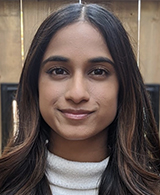
Ashini Peiris
2021 BrainsCAN Summer Intern
Supervisor(s): Dr. Daniel Ansari
Research Information:
Ashini worked on existing neuroimaging data from children with and without specific math learning difficulties. Ashini will use univariate and multi-variate analyses tools to investigate differences and similarities in the brain activity between children with and without mathematical learning difficulties. Very little is known about the neural mechanisms underpinning math learning difficulties.

Samina Panjwani
2022 BrainsCAN Summer Intern
Supervisor(s): TCN Lab
Research Information:
Parkinson's disease (PD) is characterized by the progressive degeneration of dopamine-producing neurons and the abnormal accumulation of the protein alpha-synuclein, which aggregates to form Lewy bodies. Although PD was initially classified as a motor disease, increasing evidence suggests that cognitive impairments are common during the early stages of the disease. A better understanding of these cognitive impairments can potentially serve as a diagnostic biomarker for PD. Samina worked with the TCN lab team to investigate the relationship between dopamine neuromodulation, PD pathophysiology, and cognition using cutting-edge techniques that include manipulating striatal circuits with chemogenetics, measuring animal behaviour with touchscreen cognitive assessments, and assessing PD pathophysiology with immunohistochemistry and microscopy.

Mohammed Rajab
2023 BrainsCAN Summer Intern
Supervisor(s): Dr. Ryan Stevenson & Ala Seif
Research Information:
The objective of Mohammed's research was to investigate sensorimotor gating and sensory filtering activity in autistic individuals, both children and adults, through the acoustic startle response. The acoustic startle response is a muscular reflex produced in response to a sudden loud sound. The research involves collecting acoustic startle response data from autistic and non-autistic participants to determine if autistic individuals have deficits in prepulse inhibition (PPI), which is a measure of sensorimotor gating. Sensorimotor gating is a mechanism that regulates motor actions after a sensory event. As autistic individuals tend to have auditory hypersensitivity, we aim to discover whether this is caused by a deficit in PPI.

Andreia Rodrigues
2022 BrainsCAN Summer Intern
Supervisor(s): Dr. Ingrid Johnsrude
Research Information:
Working in the Cognitive Neuroscience of Communication and Hearing (CoNCH) lab, Andreia examined existing neuroimaging and neuropsychological data collected from people with focal epilepsy and healthy controls through EpLink, the Epilepsy Research Program of the Ontario Brain Institute. Using a method called inter-subject correlation analysis, Andreia will measure the consistency of neural responses to naturalistic stimuli (from participants watching a movie during an fMRI scan) across individuals, and the relationship of those responses to neuropsychological test scores. This type of analysis could allow researchers and clinicians to get a better idea of individual neuropsychological profiles, which are useful in determining the localization of seizures before surgery.
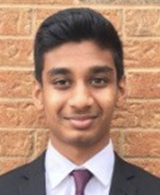
Yoshan Sasiharan
2021 BrainsCAN Summer Intern
Supervisor(s): Dr. Natasha Mhatre
Research Information:
Jumping spiders within the genus Habronattus perform courtship displays that are long and complex. Male displays are multimodal, incorporating intricate combinations of visual and vibratory motifs that can be rearranged in different ways. Dr. Mhatre's lab plans to develop Habronattus as a model to ask questions about the control of complex movement with small brains. They will precisely characterize their movements where Yoshan will use machine learning to automatically track movements and perform 3D kinematic analysis. This will allow them to describe the specific positions and motion of these spiders, rather than subjectively classifying broad categories of behaviour or movement.

Janvi Shah
2022 BrainsCAN Summer Intern
Supervisor(s): Dr. Paul Sheppard
Research Information:
The dentate gyrus of the hippocampus is critical to pattern separation — the cognitive process of keeping similar memories distinct and non-confusable. While much has been discovered with regards to the neuronal basis of this process, the involvement of non-neuronal cells, particularly astrocytes, remains under investigation. Astrocytes can release gliotransmitters that affect neuronal signaling, with many of these compounds being linked previously to pattern separation. Janvi will explore the involvement of dentate gyrus astrocytes in spatial pattern separation, using pharmacological and chemogenetic methods to explore behaviour and its underlying mechanisms. Particularly, she will investigate the release of gliotransmitters, how selective ablation of astrocytes affects spatial pattern separation, and the potential link between the two.
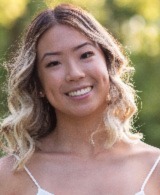
Alyson Shim
2023 BrainsCAN Summer Intern
Supervisor(s): Dr. Corey Baron
Research Information:
Magnetic resonance imaging (MRI) can provide detailed information about the properties of tissue in the brain. Diffusion MRI is a specialized MRI (dMRI) approach that measures the random molecular motion of water molecules, which is impeded by cellular structures. Accordingly, dMRI provides a window to characterized microscopic cellular properties, even though the resolution of MRI is on the order of millimeters. In this project, new dMRI methods will be used that allow measurement of quantitative parameters that relate to axon integrity in grey matter. Automated image processing pipelines will be developed that will enable region-specific measurement of these parameters throughout the brain, which will enable efficient application of these approaches in studies containing large numbers of subjects.

Shveta Suresh
2023 BrainsCAN Summer Intern
Supervisor(s): Dr. Laura Batterink
Research Information:
Studies using artificial languages have shown that people can automatically segment words in continuous speech just by listening to the speech, a phenomenon known as statistical learning (SL). In this study, Shveta tested whether passive, multi-week exposure to a novel second language facilitates word learning in adult learners using EEG and behavioural assessments. Shveta will analyze participants' mTRFs (multivariate temporal Response function) to words and nonwords to assess whether listening to Italian improves participants' neural discrimination of lexical items. If the expected results are obtained, that would suggest evidence that SL facilitates wordform learning in a fully natural language, a crucial initial step in language acquisition. Shveta will also be analyzing various common SL tasks such as the 2AFC (2 alternative forced choice task), familiarity rating, and target detection task to assess their respective reliabilities and possibly contribute to the pool of suggestions for future research in the field.

Sophie Henke Tarnow
2021 BrainsCAN Summer Intern
Supervisor(s): Dr. Julie Dumont
Research Information:
Sophie helped analyze recordings of the neuromodulator dopamine in an area of the brain called the Striatum. The technique used is called 'fibre photometry'; this allows us to record neural signals in rodents with unprecedented accuracy and precision. Sophie was also involved in uploading existing experimental data to Mousebytes, an open-access database created by researchers at Western University that allows scientists to share data and knowledge related to rodent touchscreen-based cognitive testing.

Rachel Watson
2023 BrainsCAN Summer Intern
Supervisor(s): Dr. Jeff Brooks
Research Information:
Rachel will be monitoring an Ontario professional development league soccer team to examine if repetitive head impacts alter cognitive functioning in youth male soccer players. Kinematic impact data collected from practices and games will be measured using wearable impact-measuring mouthguards (IMMs). Cognitive motor integration (CMI) tasks are a sensitive measure of brain function combining thought and action, as is often required in sports. These tasks may be useful for examining changes in brain function that occur because of purposeful headers. The study aimed to compare CMI task measures and the data collected from the IMMs throughout a soccer season to examine the relationship between purposeful headers and cognitive functioning in youth male soccer players.

Sabrina Yang
2021 BrainsCAN Summer Intern
Supervisor(s): Dr. Julie Dumont
Research Information:
Alzheimer's Disease (AD) is characterized by the deposition of plaques throughout the brain and is correlated with neuronal loss and cognitive decline. The relationship between these plaques and working memory (WM), however, remains relatively obscure. Using a novel amyloid precursor protein knock-in (APP-KI) mouse model of AD, the group's research will investigate the role of β-amyloid plaques on WM. WM performance will be assessed with touchscreen technology using the Trial Unique Non-Matching-to-Location (TUNL) task. By elucidating the relationship between WM and APP plaques, the research may open new avenues in investigating other facets of AD pathology and have downstream applications for therapeutic development.

Mohamed Yousif
2021 BrainsCAN Summer Intern
Supervisor(s): Dr. Ali Khan
Research Information:
Mohamed helped analyze a multimodal 7-Tesla MRI dataset with diabetes and metabolic syndrome patients with adjacent clinical and cognitive testing data. More specifically, the group will look at the hippocampal formation using an in-house developed coordinate system to map morphological (e.g. cortical thickness) and functional properties (e.g functional connectivity) to a two-dimensional unfolded space for further statistical analysis.

Glenda Zhai
2023 BrainsCAN Summer Intern
Supervisor(s): Dr. Brian Allman
Research Information:
Multisensory integration, the combination of information from more than one sensory modality, is essential to our formation of a comprehensible representation of the world around us. Although we rely daily on our brain's ability to successfully integrate auditory and visual information, researchers still lack a complete understanding of the underlying neural mechanisms. Toward that goal, laboratory studies on humans have used a testing protocol which creates an audiovisual illusion; i.e., the Sound-Induced Flash Illusion (SIFI) occurs when the simultaneous presentation of a single visual stimulus ("flash") with two auditory stimuli ("beeps") ultimately leads to the illusion of two visual flashes. Given that SIFI has been shown to be a valid predictor of audiovisual integration in humans, Glenda developed a translational rodent model, complete with behavioural testing and neuroanatomical experiments. Ultimately, Glenda's internship seeks to provide the foundation for future mechanistic studies into the neural circuitry underlying audiovisual integration.

Kuralay Zhaksylyk
2022 BrainsCAN Summer Intern
Supervisor(s): Dr. Blake Butler
Research Information:
Individuals with early hearing loss experience enhanced visual abilities as a result of cross-modal neuroplasticity. Dr. Butler's lab has previously demonstrated that this neuroplasticity occurs in modalities of stimulus feature detection that are similar to one another (e.g. sound and visual localization). The group examined how this process occurs and the specific stimulus features that are involved. Kuralay will assist in obtaining fMRI data from deaf and hearing animals and in analyzing the data using multi-voxel pattern analysis.
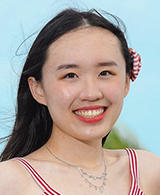
Ocarina Zheng
2021 BrainsCAN Summer Intern
Supervisor(s): Dr. Jessica Grahn
Research Information:
Groove is both a musical feature that elicits an urge to move with rhythmic patterns and an integral component of music in therapy to cue for synchronized movement to auditory stimuli in Parkinson's patients with walking impairments. Despite its importance, factors that influence it remain unclear. In Ocarina's internship, they explored the effect of nostalgia on the perception of groove in healthy adults through behavioural studies. Ocarina will also help investigate the effect of syncopation on groove perception in Parkinson's disease patients. These findings will provide a foundation for future gait studies and inform stimulus selection for clinical applications.







